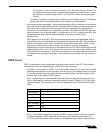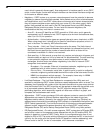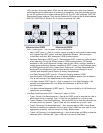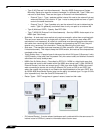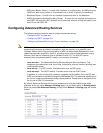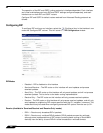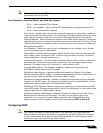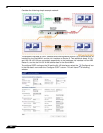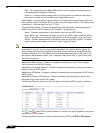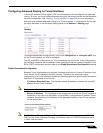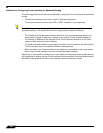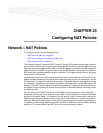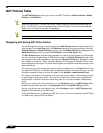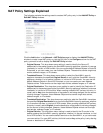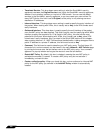
Network > Routing
343
SonicOS 5.8.1 Administrator Guide
OSPFv2 Setting
• Disabled – OSPF Router is disabled on this interface
• Enabled – OSPF Router is enabled on this interface
• Passive – The OSPF router is enabled on this interface, but only advertises connected
networks using type 1 LSA’s (Router Link Advertisements) into the local area. This is
different from the ‘Redistribute Connected Networks’ options, which would cause the OSPF
router to behave as an ASBR, and to use type 5 LSA’s (AS External Link Advertisement) to
flood the advertisements into all non-stub areas. See the ‘OSPF Terms’ section for more
information.
Dead Interval – The
period after with an entry in the LSDB is removed if not Hello is received.
The default is 40 seconds, with a minimum of 1 and a maximum on 65,535. Be sure this value
agrees with the other OSPF routers on the segment for successful neighbor establishment.
Hello Interval – The period of time between Hello packets. The default is 10 seconds, with a
minimum of 1 and a maximum on 65,535. Be sure this value agrees with the other OSPF routers
on the segment for successful neighbor establishment.
Authentication - Be sure this setting agrees with the other OSPF routers on the segment for
successful neighbor establishment.
• Disabled – No authentication is used on this interface.
• Simple Password – A plain-text password is used for identification purposes by the OSPF
router on this interface.
• Message Digest – An MD5 hash is used to securely identify the OSPF router on this
interface.
OSPF Area – The OSPF Area can be r
epresented in either IP or decimal notation. For example,
you may represent the area connected to X4:100 as either 100.100.100.100 or 1684300900.
OSPFv2 Area Type – See the ‘OSPF Terms’ section above for a more detailed description of
these settings.
• Normal – Receives and sends all applicable LSA types.
• Stub Area – Does not receive type 5 LSA’s (AS External Link Advertisements).
• Totally Stubby Area – Does not receive LSA types 3, 4, or 5.
• Not So Stubby Area – Receives type 7 LSA’s (NSSA AS External Routes).
Interface Cost – S
pecifies the overhead of sending packets across this interface. The default
value is 10, generally used to indicate an Ethernet interface. The minimum value is 1 (e.g. Fast
Ethernet) and the maximum value is 65,535 (e.g. pudding).
Router Priority – The router priority value is used in determining the Designated Router (DR)
for a segment. The higher the value, the higher the priority. In the event of a priority tie, the
Router ID will act as the tie-breaker. Setting a value of 0 makes the OSPF router on this
interface ineligible for DR status. The default value is 1, and the maximum value is 255.
OSPF Router ID – The Router ID can be any value, represented in IP address notation. It is
unrelated to the any of the IP addresses on the SonicWALL, and can be set to any unique value
within your OSPF network.
ABR Type – Allows for the specification of the topology with which this OSPF router will be
participating, for the sake of compatibility. The options are:
• Standard – Full RFC2328 compliant ABR OSPF operation.
• Cisco – For interoperating with Cisco’s ABR behavior, which expects the backbone to be
configured and active before setting the ABR flag.



